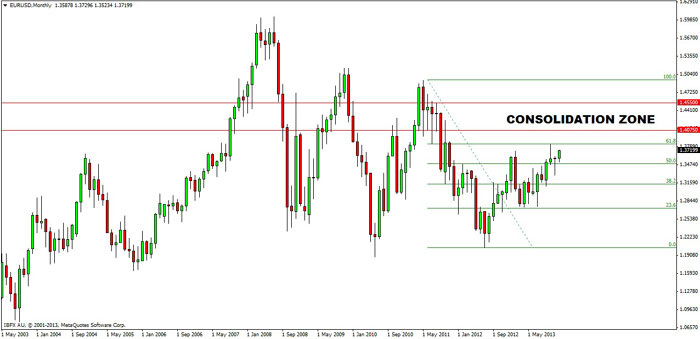
EUR/USD: Fed move key factor
London, March 30, 2014
A notable technical feature of EUR/USD exchange rates in recent years has been its decline in volatility. It seems that the fortunes of the USD during 2014 will be most affected by how long the Fed has to delay implementing the tapering program, says James Kosta, an experienced stock trader.
A forecast covering a long time period such as a year should account for both technical and fundamental factors that will shape the price movements of the currency pair in question.
Technical Factors
A notable technical feature of this pair in recent years has been its decline in volatility:
• Since 2008, each calendar year has seen a decline in volatility.
• 2012 saw the lowest volatility in this pair since the Euro’s launch in 1999, and 2013 saw a significantly lower volatility still. During 2013 the value of the pair fluctuated by only 8.23% from high to low.
This can be interpreted in two ways: that a volatility breakout is likely in 2014, or that volatility in the region of only 8% or so can be expected over the year. If the latter, this would suggest that the price in 2014 will rise no higher than around 1.4800, and fall no lower than about 1.2600. An approximate range of 1,100 pips could be expected.
Chart Picture
Turning to the monthly chart, we have recently begun to see some signs suggesting that the long-term down trend is over. The price made a higher low and higher high in 2013 than it did in 2012, and has surpassed the 50% Fibonacci retracement of the 2011-12 downwards move. The price has continued to make new 80-day highs over recent months.
Technical analysis suggests that the price will continue to rise during 2014, but will be unable to surpass the consolidation zone established during the summer of 2011 between 1.4075 and 1.4550. There is a good chance that the price could get stuck within this zone again, or that 1.4075 could act as resistance.
Fundamental Factors
It seems that the fortunes of the USD during 2014 will be most affected by how long the Fed has to delay implementing the tapering program. As long as this is delayed indefinitely, there is no reason to think that the USD will rise, and so the uptrend will continue. However, when the Fed makes announcement that makes the market believe that tapering is seriously on its way, this will probably make it harder for the USD to fall, and so would be likely to work against the continuing rise in this pair.
For the Euro, the improving economic outlook and absence of any concrete implementation of a stimulus plan are keeping things bullish. However should either of these factors change, it will be hard for the pair to continue rising.
Conclusion
Bringing it all together, we can expect this pair to continue rising up to around 1.4000 and possibly even higher, provided the perception of fundamentals does not alter before this happens. When the perceptions do alter, the pair is quite likely to have made its yearly high, or may perhaps simply consolidate within the consolidation zone identified previously.
• James Kosta is an experienced stock trader who currently writes technical analysis for finance blogs. He currently lives in Richmond, London UK.







